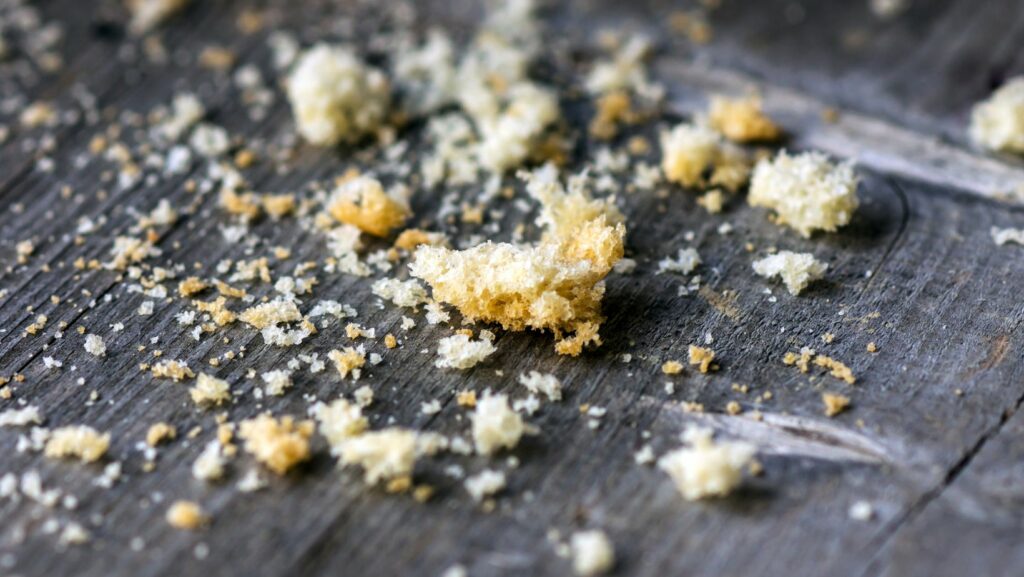Making breadcrumbs from bread is a simple process that can be done in just a few steps. Whether you want to use leftover bread or add a crunchy topping to your dishes, here’s how to make breadcrumbs from bread.
How to Make Breadcrumbs From Bread
To start, gather your desired type of bread. This can be any kind of bread, such as white, whole wheat, or stale. Cut off the crusts if preferred, and break the slices into smaller pieces.
Next, it’s time to transform these bread pieces into crumbs.
You have a couple of options: use a food processor or go old-fashioned and opt for manual crumbling. Using a food processor, pulse the pieces until they reach your desired consistency. Place the elements in a resealable bag for manual crumbling and crush them with a rolling pin or your hands.
Once you have achieved the desired crumb size and texture, spread them on a baking sheet lined with parchment paper. Bake them in a preheated oven at 300°F (150°C) for 10-15 minutes until they are dry and golden brown.
After removing the baked breadcrumbs from the oven, let them cool completely before storing them in an airtight container. They can be kept at room temperature for up to one month or frozen for longer shelf life.
Now that you know how simple it is to make breadcrumbs from bread, you’ll never waste another slice! Use these homemade breadcrumbs as coatings for fried foods like chicken tenders or fish fillets, toppings for casseroles and gratins, and binders for meatballs or veggie burgers – the possibilities are endless!

Choosing the Right Bread
Selecting the right type of bread is crucial when making breadcrumbs from bread. The texture, flavor, and quality of your chosen bread will greatly impact the outcome of your homemade breadcrumbs. Here are a few key factors to consider when selecting the perfect bread for your breadcrumb-making adventure:
- Freshness: Opt for fresh bread that is fresh and soft enough. Avoid using bread that has started to mold or has an unpleasant odor.
- Texture: Look for a loaf with a firm and even surface. Loaves of bread with a denser crumb tend to yield better results when making breadcrumbs.
- Crust: Decide whether you want to include the crust in your breadcrumbs. If you prefer softer breadcrumbs, remove the crust before processing the bread. However, if you enjoy a slightly crunchier texture, leave the crust intact.
- Flavor: Consider how the taste of the bread will complement your dish. Neutral-flavored pieces of bread like white sandwich bread work well as a versatile base for any recipe, while whole grain or artisanal loaves can add a more distinct taste to your breadcrumbs.
- Moisture content: Remember that drier bread will result in crispier crumbs, while moister bread may produce softer crumbs. Adjusting the moisture content of your breadcrumbs can be achieved by leaving sliced bread out overnight (for drier crumbs) or adding a little bit of oil or butter (for moister crumbs).
Final Thoughts
Remember, there’s no one-size-fits-all answer when choosing the perfect type of bread for making breadcrumbs – it largely depends on personal preference and what you plan on using them for.
Experiment with different types of artisanal loaves, whole wheat slices, or even flavored buns to create unique breadcrumb blends tailored to specific recipes and culinary creations.
Now that we’ve covered the basics of selecting the right bread, let’s move on to the next step in our breadcrumb-making journey: preparing and processing the bread.

